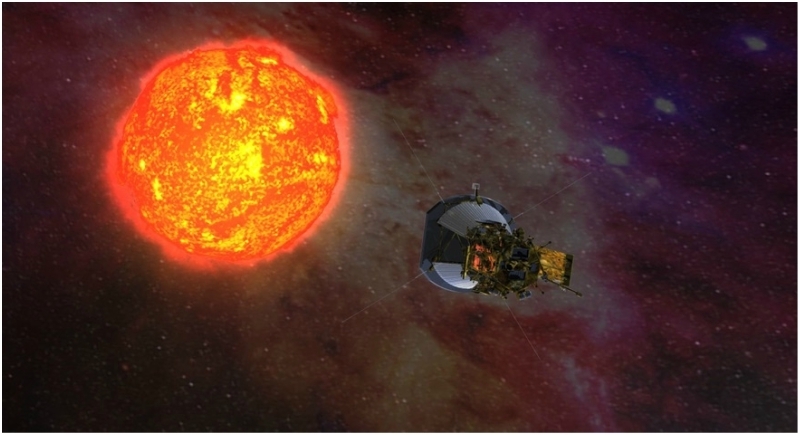NASA’s historic ‘Parker Solar Probe’ to study our ‘Sun’; countdown to launch on August 12
Washington, August 11: People around the world look up and see our Sun every day. But through a space telescope, it looks nothing like it does from down on the ground. The surface dances with arches of solar material that reach up into the solar atmosphere – an environment of charged particles and magnetic fields, unlike anything we experience on Earth.

NASA is on the countdown to launch its historic ‘Parker Solar Probe’ on August 12 morning which initially was decided to launch today morning.
In 2018, the Parker Solar Probe will launch from a Delta IV Heavy rocket and travel approximately 3 months to take its first swing by the Sun right through that atmosphere. Over seven years it will get ever closer until ultimately it’s within 3.9 million miles (6.2 million km) of the Sun’s surface. That’s so close, that the previous record holder, the Helios-B Spacecraft, was seven times farther away.
“This probe will journey to a region humanity has never explored before,” said Thomas Zurbuchen, the associate administrator for the Science Mission Directorate at NASA Headquarters in Washington. “This mission will answer questions scientists have sought to uncover for more than six decades.”
Understanding the Sun has always been a top priority for space scientists. Studying how the Sun affects space and the space environment of planets in the field known as heliophysics.
The field is not only vital to understanding Earth’s most important and life-sustaining star, it supports exploration in the solar system and beyond. The ‘Parker Solar Probe’ mission will revolutionize our understanding of the Sun, where changing conditions can spread out into the solar system, affecting Earth and other worlds.
“Parker Solar Probe is, quite literally, the fastest, hottest and, to me, coolest mission under the Sun,” said project scientist Nicola Fox, of the Johns Hopkins Applied Physics Laboratory. “This incredible spacecraft is going to reveal so much about our star and how it works that we’ve not been able to understand.”